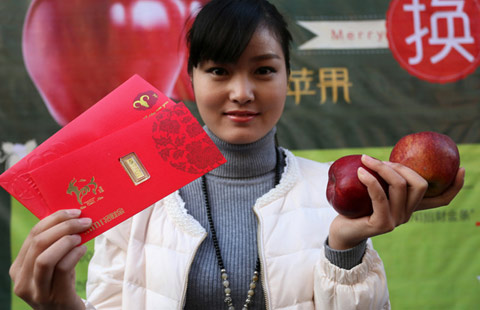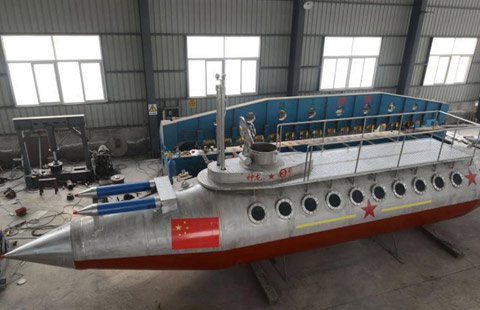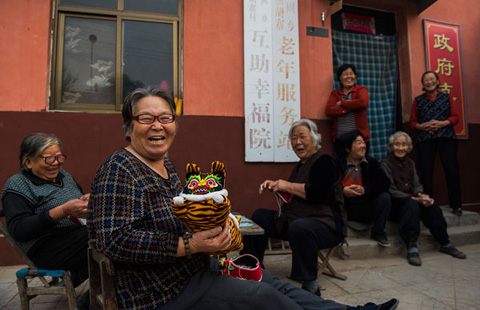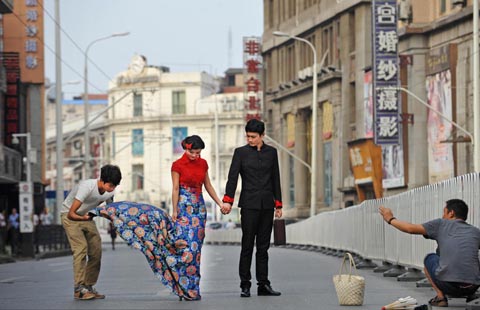Swaps allow China to go on offensive
(Agencies) Updated: 2014-12-25 09:51PBOC is making available as much as $500 billion to other central banks
Just like the television, iPhone and American flags, central-bank international currency swaps are a US creation now made in China though only the swaps serve as a $500 billion State tool of economic and geopolitical power.
The Federal Reserve began foreign-exchange swap lines with allies including West Germany at the peak of the Cold War in 1962 to defend against losses from gold reserves, and in 2007 revived the program to fight the financial crisis.
While the Fed's program has gone virtually dormant, the People's Bank of China has been busy signing agreements over the past six years across Europe, Asia and the Americas as it seeks to expand the yuan's role in global trade and finance.
Here's how the deals work: Central bank A lends its currency in exchange for that of central bank B. At maturity, B returns the full amount of currency to A plus interest.
That saves the original lender from assuming the risk of fluctuating exchange rates.
As a way of spraying currencies around the world quickly, the pacts have proliferated to dozens of central banks.
What makes China different is that it is using swaps to play offense, not defense.
"In 2008 they were crucial, and if the Fed hadn't behaved as it did then the global recession we had would have been far worse than it was," said William Allen, a former Bank of England official who has studied swaps and is now a senior visiting fellow at Cass Business School in London.
"China's objectives are not to do with crisis management, but promoting the use of the yuan in international trade."
Those objectives came to the fore in recent days when Chinese officials signaled that they are willing to expand a 150 billion-yuan ($24 billion) swap line to help Russia weather the worst economic crisis since its 1998 default.
That highlights China's goals in making available swap funds of as much as 3.1 trillion yuan, or the equivalent of about $500 billion: to help countries in need such as Russia and Argentina, increase the currency's use in trade with partners including Thailand, and deepen financial-market ties with the UK and the rest of Europe.
In the case of Russia, it also increases its power at a time when President Vladimir Putin's government is being rebuffed by international markets and capitals because of the Ukraine crisis.
"From China's point of view, there is a strong element of showing its ability to increase its strategic influence through political and economic means," said Eswar Prasad, a former head of the IMF's China and financial-studies divisions who wrote about swap lines in his 2014 book The Dollar Trap: How the US Dollar Tightened its Grip on Global Finance.
"Practically every month China signs a swap deal," Prasad said. "As China becomes bigger, its presence in the world economy becomes bigger, and as the renminbi's role becomes bigger we'll see bigger swap lines."
Transactions under the swap lines amounted to 294 billion yuan in the third quarter and "played an active role in promoting bilateral trade and investment," the PBOC said in its third-quarter monetary-policy report in November.
Use of the Fed's swap lines, which peaked at almost $600 billion in 2008 as the world needed dollars in a hurry, declined to $2 million as of last week.
The US central bank in October 2013 made the swap lines permanent with central banks in Europe, the UK, Canada, Japan and Switzerland.
"Swaps calm crisis situations by both supplementing foreign countries' dollar reserves and by signaling central bank cooperation," economists including Michael D. Bordo of Rutgers University in New Jersey wrote in a study published this month by the National Bureau of Economic Research.
In addition to the bilateral agreements that the US and China have made with other nations, Japan has signed deals with trading partners including the Philippines, Indonesia and India; Australia made a deal with South Korea; Switzerland and Poland reached a pact; and South Korea inked an accord with Malaysia.
- China's bankers enjoy first pay hike since global financial crisis
- Shrinking margins ahead for brokerages
- China ahead of schedule with 2014 energy targets
- Chinese goods most attractive in Lebanon during holidays
- Yunfu chisels new shape for stone industry
- Surging refinery capacity creates tempest in a teapot
- Ruling set to burn US solar firms
- UnionPay inches ahead of Visa, MasterCard in South Korea

















